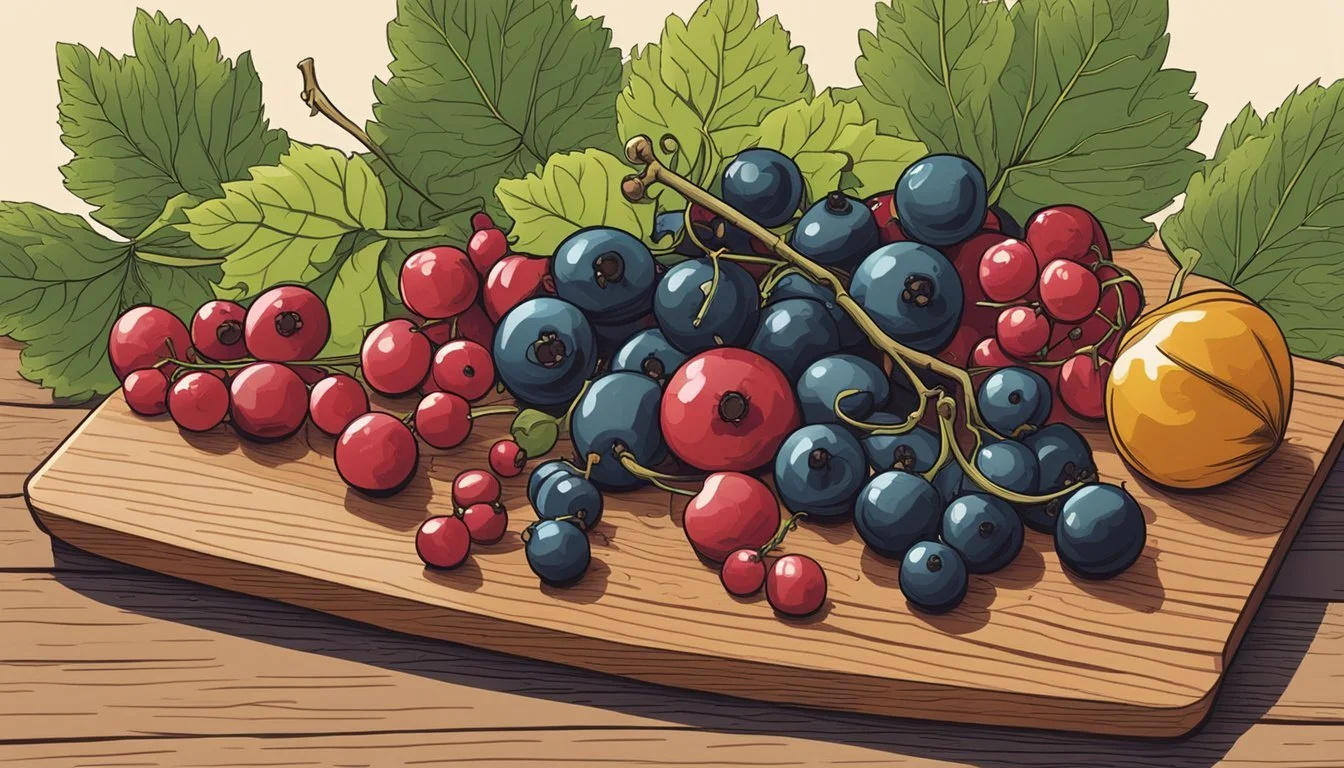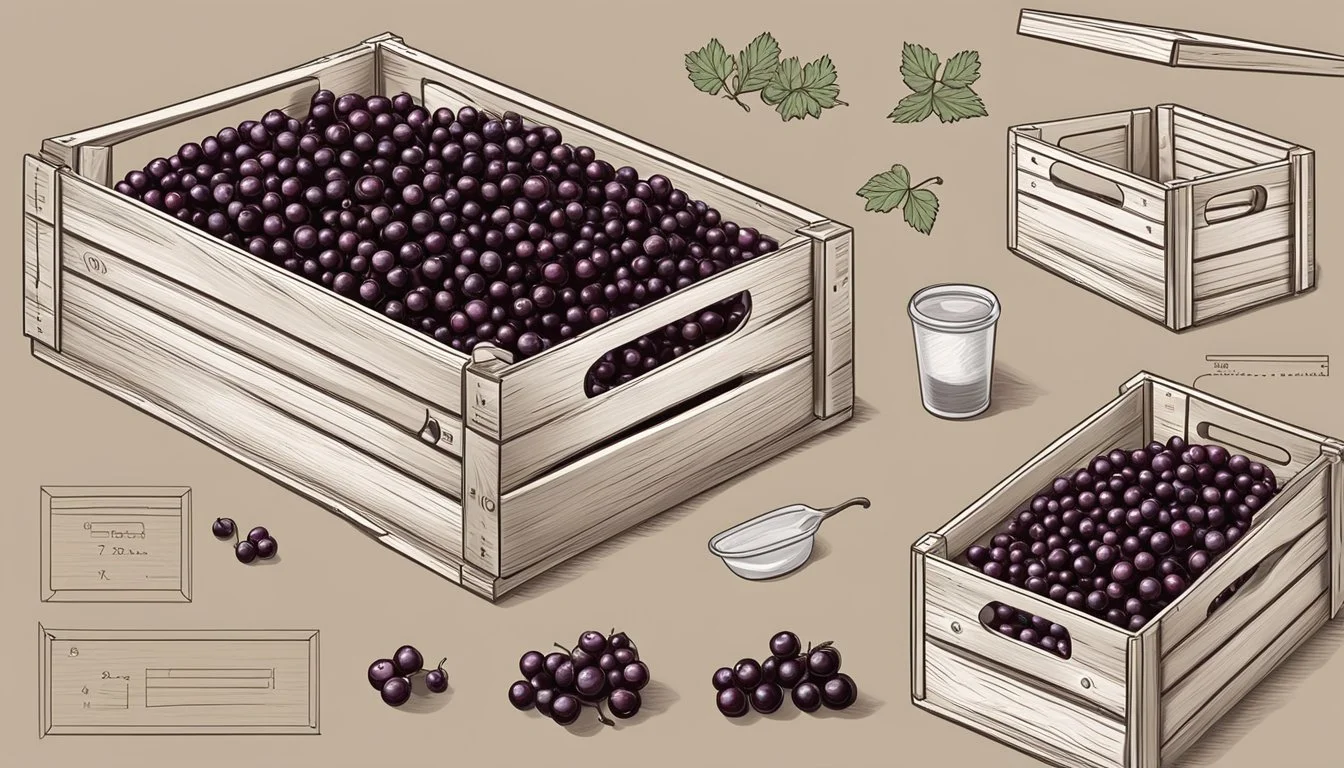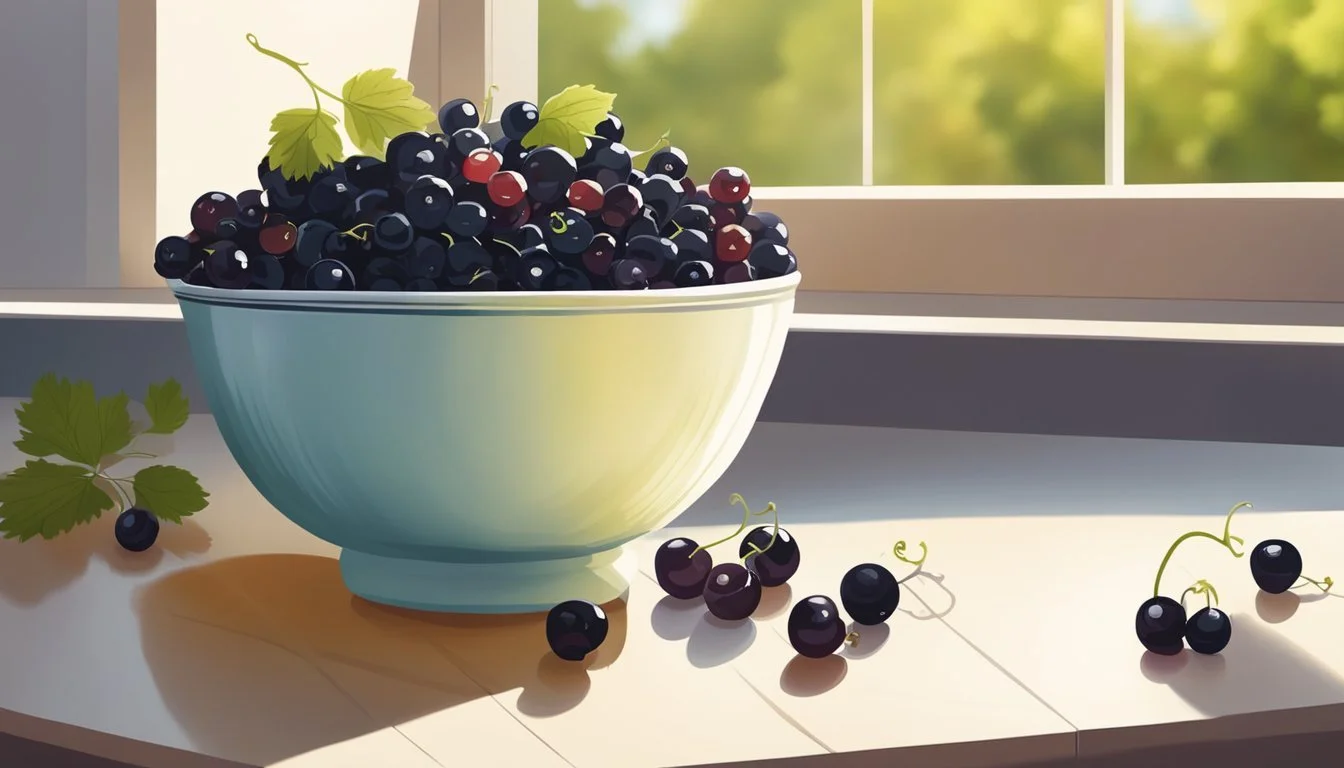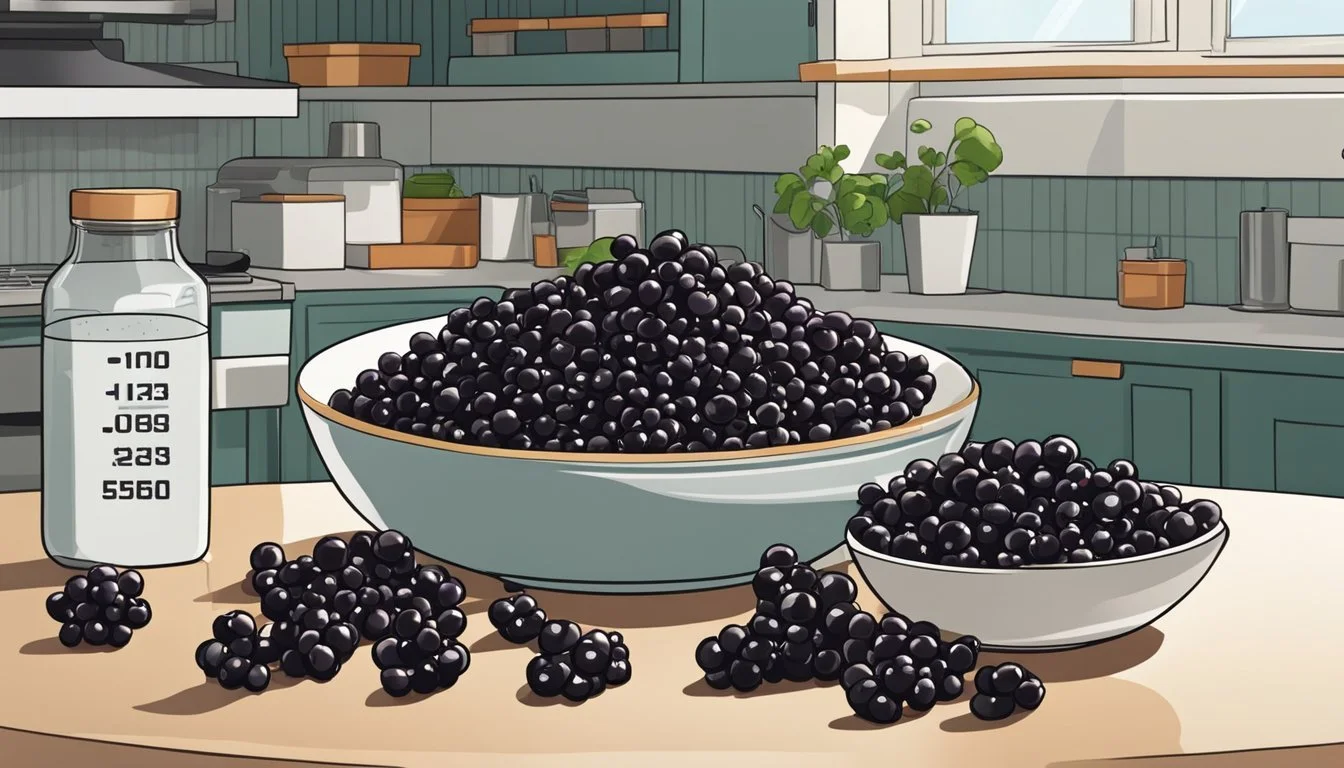How Long Do Currants Last?
Shelf Life and Storage Tips
Currants, whether dried or fresh, are a versatile ingredient cherished for their tart flavor and nutritional value. The longevity of currants hinges largely on their form and storage conditions. Fresh currants generally last about two weeks in the refrigerator when stored properly in a sealed container to prevent moisture loss and other contaminations. Meanwhile, the shelf life of dried currants is significantly longer due to the removal of moisture, which inhibits the growth of microorganisms that cause spoilage.
Dried currants have an impressive shelf life when kept in a cool, dry place, and can last from 6 months to a year before they start to lose their quality. Maximizing their shelf life involves storing the dried fruits (What wine goes well with dried fruits?) in airtight containers or heavy-duty plastic bags to prevent exposure to air and humidity. Freezing dried currants can extend their usability up to 18 months, making them a convenient pantry staple for use in a variety of culinary applications ranging from baking to cooking.
It is important to recognize signs of spoilage, as they directly affect food safety and taste. Dried currants that have gone bad may exhibit changes in texture, aroma, and flavor, and should not be consumed. In doing so, consumers ensure that they enjoy the highest quality and taste that currants can offer while also benefiting from their nutritional properties.
Types of Currants
Currants come in a variety of colors, each with its own distinctive flavor profile and culinary use. They are small fruits from the Ribes family but should not be confused with Zante currants, which are actually dried grapes.
Red Currant
Red Ribes are characterized by their bright red hue and glossy skin. They are often found in clusters that resemble miniature grapes and have a tart taste that can be enjoyed raw or used to create jellies and sauces. Red currants are known for their vibrant color and are typically used as a garnish due to their appealing appearance.
Black Currant
Black Ribes varieties are renowned for their strong flavor, which is more intense and earthy compared to their red and white counterparts. The skin of black currants is usually darker and the fruits contain several small seeds. They are a powerhouse of vitamins and are commonly used in the production of cassis, a sweet, dark red liqueur.
White Currant
White currants bear a close resemblance to red currants in shape and texture, but they boast a translucent skin and a lighter, sweeter taste. They are less common than red and black currants but can be used interchangeably in recipes that call for red currants when a milder flavor is preferred.
Nutritional Profile
Currants boast a rich nutrient composition that supports various aspects of health. They are particularly noted for their high vitamin C content, which is essential for tissue repair and immune function. One serving of currants offers approximately 46 milligrams of vitamin C, contributing significantly to the recommended daily intake.
The dietary fiber in currants aids digestion and contributes to a feeling of fullness. They are also a good source of vitamin K, which is necessary for blood clotting and bone health. Additionally, the fruit provides a moderate amount of vitamin E and vitamin A, both of which are vital for maintaining healthy skin and vision.
The mineral content of currants should not be overlooked. Potassium, a mineral that currants are rich in with 361 milligrams per serving, is crucial for cardiovascular health and helps regulate fluid balance. Iron, another important mineral found in currants, supports the production of red blood cells and can prevent anemia. Here's a brief overview of the nutritional elements found in currants:
Nutrient Content Calories 71 kcal Carbohydrates 17.2g Protein 1.6g Vitamin C 46mg Potassium 361mg Iron 1.7mg
Currants are low in fat, making them a healthy choice for those who are mindful of their fat intake. With a glycemic index of 22, currants have a minimal impact on blood sugar levels, making them an excellent option for those managing diabetes or seeking to maintain stable energy levels throughout the day.
Fresh Currant Storage
Storing fresh currants properly extends their shelf life, maintaining their taste and nutritional value. Whether at room temperature, in the refrigerator, or by freezing, there are specific methods to ensure their longevity.
Room Temperature Storage
Fresh currants have a limited shelf life when stored at room temperature. They are best kept in a cool, dry place away from direct sunlight. Typically, fresh currants can last for 1 to 2 days at room temperature. To maximize freshness, they should not be washed until just before use to prevent mold growth.
Refrigerator Storage
For longer storage, fresh currants should be refrigerated. They need to be placed in an airtight container or a breathable container lined with paper towels to absorb excess moisture. Spreading them out in a single layer can prevent bruising. In the fridge, currants can last up to 6 days. It's advised to only remove the peduncles after washing as this helps preserve their integrity.
Freezing Fresh Currants
For storing fresh currants over many months, freezing is the most effective method. After washing and drying thoroughly, the currants should be de-stemmed and spread in a single layer on a baking sheet. Once frozen, transfer them to an airtight container or a sealable freezer bag. Properly frozen currants can last in the freezer for up to one year. Freezing preserves not only the fruit's flavor but also its nutritional content.
Dried Currant Storage
Storing dried currants properly is essential to maximize their shelf life and maintain quality. Dried currants, when stored correctly, can last between 6 to 12 months. The key factors that affect the storage of dried currants are temperature, humidity, and light exposure.
Ideal Conditions:
Temperature: Room temperature (around 68°F or 20°C) is sufficient for storing dried currants.
Humidity: Low humidity environments are preferable.
Light: A dark place aids in preserving the quality of dried currants.
For households in hot or humid climates, it is advisable to store dried currants in the refrigerator to extend their shelf life. Here is a guideline for storing dried currants:
Pantry:
Place in an airtight container.
Keep in a cool, dry, and dark place.
Refrigerator:
Use an airtight container to prevent moisture ingress and odor absorption.
Storage Tips:
Inspect: Regularly check the dried currants for any signs of spoilage such as a sour smell, discoloration, or mold.
Seal: Ensure that the container is sealed tightly after each use.
Avoid Light: Store away from direct sunlight as it can degrade the quality of the dried currants.
Use First: Follow the first-in, first-out principle to use older supplies before new ones.
By adhering to these storage guidelines, one can ensure that dried currants retain their flavor, texture, and nutritional value for the duration of their shelf life.
Maintaining Currant Quality
Proper handling and storage are critical for maintaining the quality and extending the shelf life of currants. Identifying when currants have gone bad helps prevent waste, while specific storage techniques can prolong their freshness.
Identifying Bad Currants
Signs of spoilage:
Color: Fresh currants have a vibrant, uniform color. Discoloration may suggest spoilage.
Texture: They should be firm to the touch; mushy currants indicate decay.
Smell: A sour or off odor is a clear sign that currants are no longer good.
Mold: Any visible mold growth means the fruit must be discarded.
Extending Shelf Life
Storage tips:
Temperature: Refrigerate currants at temperatures around 32°F to 36°F to slow down the ripening process.
Humidity: Maintain high humidity levels in the refrigerator to keep currants from drying out.
Packaging: Store them in a breathable container or a perforated plastic bag to allow air circulation and prevent moisture accumulation.
Handling best practices:
Washing: Wash currants only right before consumption to prevent excess moisture from accelerating decay.
Separation: Remove any spoiled berries to prevent them from affecting the good ones.
By following these guidelines, one can protect the quality and enjoyment of currants for as long as possible.
Culinary Uses of Currants
Currants, with their sweet and tart flavor profile, play a versatile role in many culinary creations. In their fresh form, red, white, and black currants add a beautiful contrast to dishes with their vibrant colors and flavors. They are commonly used in making jams and jellies, where their natural pectin (how long does pectin last?) helps to thicken and set these preserves.
Baking with currants is habitual, as they are often included in recipes for scones, muffins, and bread. Their tartness adds complexity to the sweetness of baked goods, making them a delightful ingredient for anyone's palate. In desserts, currants provide a burst of flavor, whether sprinkled on top of a tart or incorporated into sweet sauces that complement dishes, such as panna cotta or ice cream.
The utility of currants extends to savory applications as well. They can be a desirable accent in sauces, imparting a balanced sweetness that can elevate the flavors of various meats and vegetables. Recipes for tagines and stews sometimes include currants to add depth and a hint of sweetness to these hearty dishes.
Here is a brief listing of culinary applications for currants:
Jams & Jellies: Utilize the natural pectin in currants to create thick and flavorful spreads.
Baking: Incorporate them into pastry recipes for added sweetness and tartness.
Desserts: Use currants to enhance the flavor profile of a dessert or to top it for additional texture.
Sauces: Mix into sauces to introduce a sweet complexity that pairs well with meats and vegetables.
Currants serve not only as an accompaniment but can be a star ingredient in various culinary contexts due to their distinct sweet and tart character.
Growing Currants
Growing currants successfully requires attention to soil conditions, proper bush management including regular pruning, and vigilant disease and pest prevention strategies.
Garden Care
A gardener must begin with the soil; currants thrive in well-drained soil rich in organic matter. Compost can be incorporated to improve soil quality. The soil pH should be between 5.5 and 7.0. Currants prefer locations that receive full sun to partial shade. After planting, a layer of mulch can help retain moisture and add further organic nutrients as it breaks down.
Sun Needs: Full sun to partial shade
Soil pH: Between 5.5 and 7.0
Mulching: Necessary to retain moisture
Fertilization: Apply in early spring
Bush Management and Pruning
Bushes should be pruned to maintain their shape and to allow sunlight and air to penetrate the plant, which encourages healthy growth and reduces the risk of disease. Pruning involves removing any damaged or dead wood and thinning the center of the bush. Annual pruning is essential for promoting good fruit production.
Pruning Time: Late winter or early spring
Maintenance: Remove dead or damaged branches
Disease and Pest Prevention
Currants can be susceptible to various diseases and pests. To prevent this, maintain good air circulation within the bushes and keep the garden clean of debris. Fungicides and insecticides can be used as a preventive measure, though organic options should be preferred to maintain a safe environment for both the garden and the gardener.
Pest Management: Regular inspection and organic treatments
Disease Control: Good air circulation and clean garden space
Harvest and Post-Harvest Handling
Successful currant preservation hinges on proper harvesting and post-harvest techniques to maximize fruit quality and lifespan. One should harvest currants at the peak of ripeness, clean them gently, and store under optimal conditions to enjoy them throughout the off-season.
Harvesting Techniques
Currants reach their harvesting window in early summer, with red currants typically ready in late May to early June, and black currants following two to three weeks later. One must harvest the berries as entire clusters, which ensures a swift picking process and prevents individual berries from bruising. To reduce the chance of damage to the plants and fruits, use shears or your hands to snip the fruit-laden strands from the bushes.
Cleaning and Preparation
Once harvested, currants require a delicate rinse to remove any dirt or debris. It's crucial to perform this rinsing process carefully, preferably in a colander under cold, running water to preserve the integrity of the fruit. After rinsing, spread the currants out on a clean towel, allowing them to air-dry completely to prevent mold growth during storage.
Storing for Off-Season
Proper storage extends the enjoyment of currants through fall and winter. For short-term storage, place the currants in a breathable container or bag, ensuring they are dry and refrigerate them. They typically last up to a week when stored this way. For long-term storage, currants can be frozen. To freeze, lay the currants on a tray in a single layer until solid and then transfer them to a freezer bag. This method prevents the berries from clumping together, making it easier to use individual portions as needed.
Health and Safety Considerations
When considering the inclusion of currants in one's diet, attention must be paid to both their nutritional benefits and potential health and safety concerns. This includes understanding their role in nutrition and considering any allergies and sensitivities.
Currants in Diet
Currants can be a nutritious addition to the diet due to their high fiber content and presence of vitamins and minerals. They are also low in calories and fats. Safety in consumption is typically high, as dried currants, when properly stored, do not spoil easily. However, one should be aware that the nutritional content can degrade over time, and they should be consumed within recommended time frames for peak quality.
Allergies and Sensitivities
While currants are not commonly allergenic, individual sensitivities can exist. Allergies to dried fruits are often related to pollen or sulfite sensitivity. Dried currants sometimes contain sulfites as preservatives, which can provoke reactions in sulfite-sensitive individuals. For those who have this sensitivity, seeking organic or sulfite-free options is recommended for safety. Additionally, they should always read labels for potential cross-contaminants if they have other food allergies.









